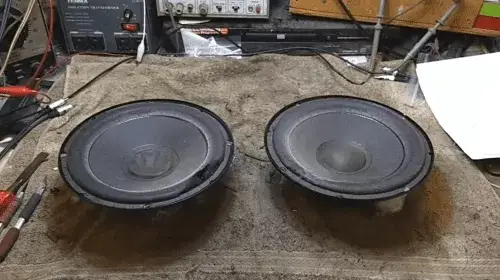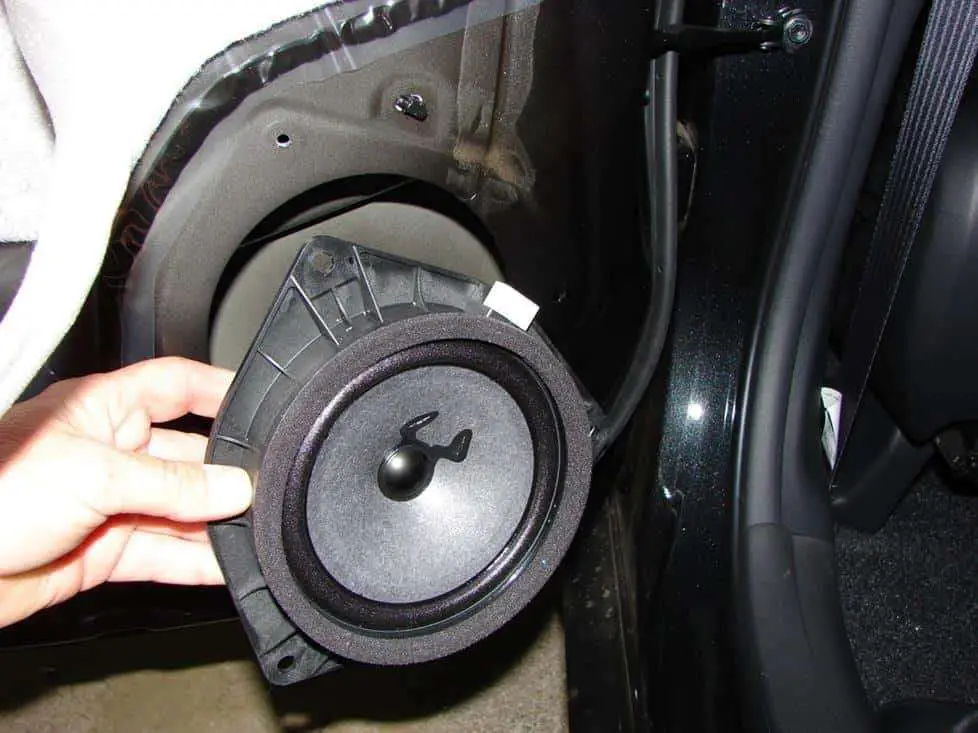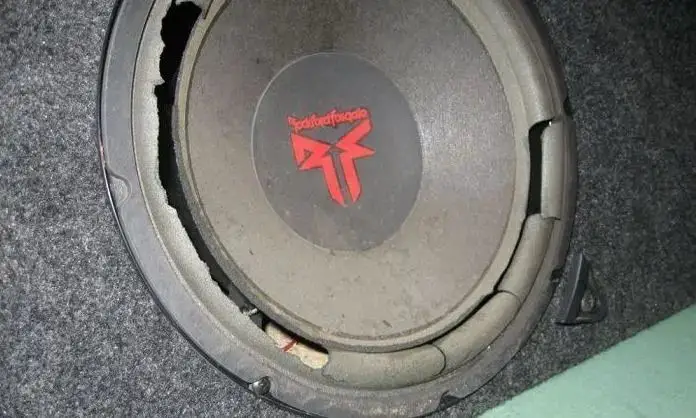A subwoofer is a type of loudspeaker that is specifically designed to reproduce low-frequency audio, such as bass and sub-bass.
It is a crucial component of any car audio system, as it helps to enhance the overall sound quality by providing deep, rich bass.

However, like any other electronic device, a subwoofer can malfunction and become “blown.”
In this article, we will discuss the symptoms, causes, and methods for identifying a blown subwoofer, as well as tips for preventing subwoofer blowouts in the future.
Symptoms of a Blown Subwoofer
There are a few tell-tale signs that indicate a subwoofer is blown. The most common symptoms are indicated below-
Low Volume
One of the first signs that a subwoofer may be blown is a lack of sound or low volume. If the subwoofer is not producing any sound at all, or if the volume is significantly lower than usual, it is likely that the subwoofer has blown.
Muffled or Distorted Sound
Another symptom of a blown subwoofer is distorted or muffled sound.
If the sound coming from the subwoofer is not clear and crisp, but rather distorted or muffled, it could be a sign that the subwoofer has been damaged.
Rattling or Buzzing Noise
A third symptom of a blown subwoofer is a rattling or buzzing noise. If the subwoofer is making a rattling or buzzing noise, it is likely that the subwoofer is damaged.
This noise is usually caused by the subwoofer’s voice coil rubbing against the magnets inside the subwoofer.
Overheating
Lastly, over heating is another symptom of a blown subwoofer. If the subwoofer is getting too hot to touch, then it may be blown.
Causes of a Blown Subwoofer
There are several factors that can cause a subwoofer to blow.
Overburdening it
One of the most common causes is overdriving the subwoofer.
If the subwoofer is being driven at a higher level than it is designed for, it can cause the subwoofer to blow.

Wrong Amplifier
Another common cause of a blown subwoofer is using the wrong type of amplifier. If the amplifier is not designed to work with the subwoofer, it can cause the subwoofer to blow.
Incorrect Wiring
Using the wrong type of wiring can also cause a subwoofer to blow. If the wiring is not the correct size or gauge, it can cause the subwoofer to receive too much power, which can cause the subwoofer to blow.
Physical Damage
Lastly, physical damage to the subwoofer can also cause it to blow. If the subwoofer is bumped or hit, it can cause the subwoofer to blow.
It’s important to note that these are not the only causes of a blown subwoofer. It’s possible that the subwoofer could be blown for another reason.
How to Test a Subwoofer
There are several methods that can be used to test a subwoofer to determine if it is blown.
Using Multimeter
One of the most basic methods is to use a multimeter to test for continuity. This involves setting the multimeter to the continuity setting and touching the positive and negative terminals of the subwoofer with the multimeter’s probes.
If the multimeter beeps, it indicates that the subwoofer has continuity and is likely not blown.
If the multimeter does not beep, it indicates that the subwoofer does not have continuity and is likely blown.
Test Tone Generator
Another method for testing a subwoofer is to use a test tone generator to check for distortion.
This involves connecting the test tone generator to the subwoofer and playing a test tone through the subwoofer.
If the test tone is distorted, it indicates that the subwoofer is likely blown.
It is also important to check for physical damage when testing a subwoofer.
This can include checking for any visible damage to the subwoofer’s cone, such as tears or holes, as well as checking for any damage to the subwoofer’s voice coil.
Preventing a Blown Subwoofer
There are several steps that can be taken to prevent a subwoofer from blowing.
One of the most important steps is to properly match the subwoofer to the amplifier.
This involves ensuring that the subwoofer’s power handling capabilities are compatible with the amplifier’s output power.
Proper wiring is also crucial in preventing a blown subwoofer.
This includes using the correct size and gauge of wire for the subwoofer and amplifier, as well as ensuring that all connections are secure and free of corrosion.
Properly setting the gain on the amplifier is also crucial in preventing a blown subwoofer.
This involves adjusting the amplifier’s gain so that it is not overdriving the subwoofer.
Lastly, it is important not to overdrive the subwoofer. This means not playing the subwoofer at a volume that is higher than its capabilities.

Conclusion
A blown subwoofer can have a significant impact on the overall sound quality of a car audio system, it is important to identify and fix the problem promptly.
Through proper diagnosis and preventive measures, subwoofer blowouts can be avoided and sound quality can be maintained.
It’s important to remember that a subwoofer that is not producing sound, producing low volume, producing distorted or muffled sound, making rattling or buzzing noise or getting too hot to touch is likely blown.
By following the steps outlined in this article, you can test your subwoofer and take the necessary steps to prevent future subwoofer blowouts.
Can a blown subwoofer be repaired?
It depends on the cause and extent of the damage. If the subwoofer is blown due to a simple problem such as a loose connection, it may be possible to repair it.
However, if the subwoofer is blown due to more serious issues such as a damaged voice coil or cone, it may be necessary to replace the subwoofer.
Is it safe to keep using a blown subwoofer?
No, it is not safe to keep using a blown subwoofer. A blown subwoofer can cause damage to the rest of the audio system, as well as produce poor sound quality.
It is important to stop using the subwoofer and address the problem as soon as possible.
Can a blown subwoofer cause damage to the amplifier?
Yes, a blown subwoofer can cause damage to the amplifier.
If the subwoofer is overdriven, it can cause the amplifier to produce too much power, which can damage the amplifier.
Additionally, if the subwoofer is not producing sound or producing distorted sound, it can cause the amplifier to work harder than it should, which can also cause damage.
Can a blown subwoofer be caused by a faulty amplifier?
Yes, a blown subwoofer can be caused by a faulty amplifier. If the amplifier is not working properly, it can cause the subwoofer to receive too much power, which can cause the subwoofer to blow.
Additionally, if the amplifier is not designed to work with the subwoofer, it can cause the subwoofer to blow.
Can a blown subwoofer be caused by playing it too loudly?
Yes, a blown subwoofer can be caused by playing it too loudly. If the subwoofer is played at a volume that is higher than its capabilities, it can cause the subwoofer to blow. This is known as overdriving the subwoofer.
